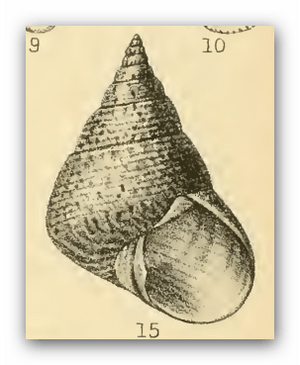Cantharidus opalus facts for kids
Quick facts for kids Cantharidus opalus |
|
|---|---|
 |
|
| Drawing of a shell of Cantharidus opalus | |
| Scientific classification | |
| Synonyms | |
|
The Cantharidus opalus, often called the opal top shell, is a type of large sea snail. In the Māori language, it is known as matangongore. This amazing creature is a mollusc that lives in the ocean. It belongs to the Trochidae family, which are often called "top snails" because of their cone-like shell shape.
Contents
What Does the Opal Top Shell Look Like?
The shell of the opal top shell can be anywhere from about 23 millimeters (less than an inch) to 45 millimeters (about 1.75 inches) long. It has a tall, cone-like shape and is quite solid. The shell is not perfectly round at its widest part; it has a slight angle.
Shell Colors and Patterns
The shell is usually whitish. It often has a blue tint on the main part of the shell and a yellowish or pinkish color near the top. You'll notice cool zigzag patterns of purple running all over the shell. Sometimes these zigzags are broken up into smaller, separate marks. The shell also has a thin, shiny outer layer that can sometimes rub off.
Inside the Shell
The very tip of the shell, called the protoconch, is small and pointy. It has about two and a half smooth, pinkish-brown spirals. The whole shell has 8 to 10 spirals, or whorls. These whorls start small and then get much bigger. The main body whorl, which is the largest part, has a clear angle around its edge. The bottom of the shell is gently curved.
The opening of the shell, called the aperture, is shaped like an oval. The inside of this opening is lined with a beautiful, shiny green material called nacre, which can also show red colors. This is the same material that makes up mother-of-pearl! The outer edge of the opening is thin. Inside, there's often a thick white area that follows a greenish edge.
Where Do Opal Top Shells Live?
This sea snail lives only in New Zealand. It is found in the ocean, usually in areas with kelp beds. You can find them from just below the water's surface down to at least 15 meters (about 50 feet) deep. They prefer coasts that are somewhat exposed to waves or very exposed.
See also
 In Spanish: Cantharidus opalus para niños
In Spanish: Cantharidus opalus para niños

